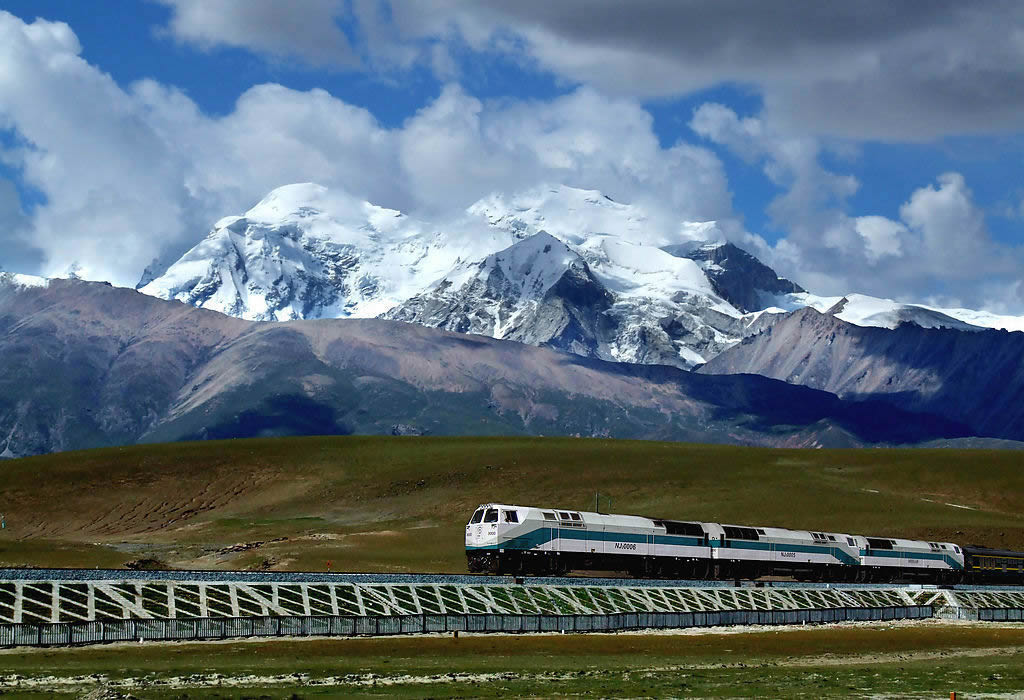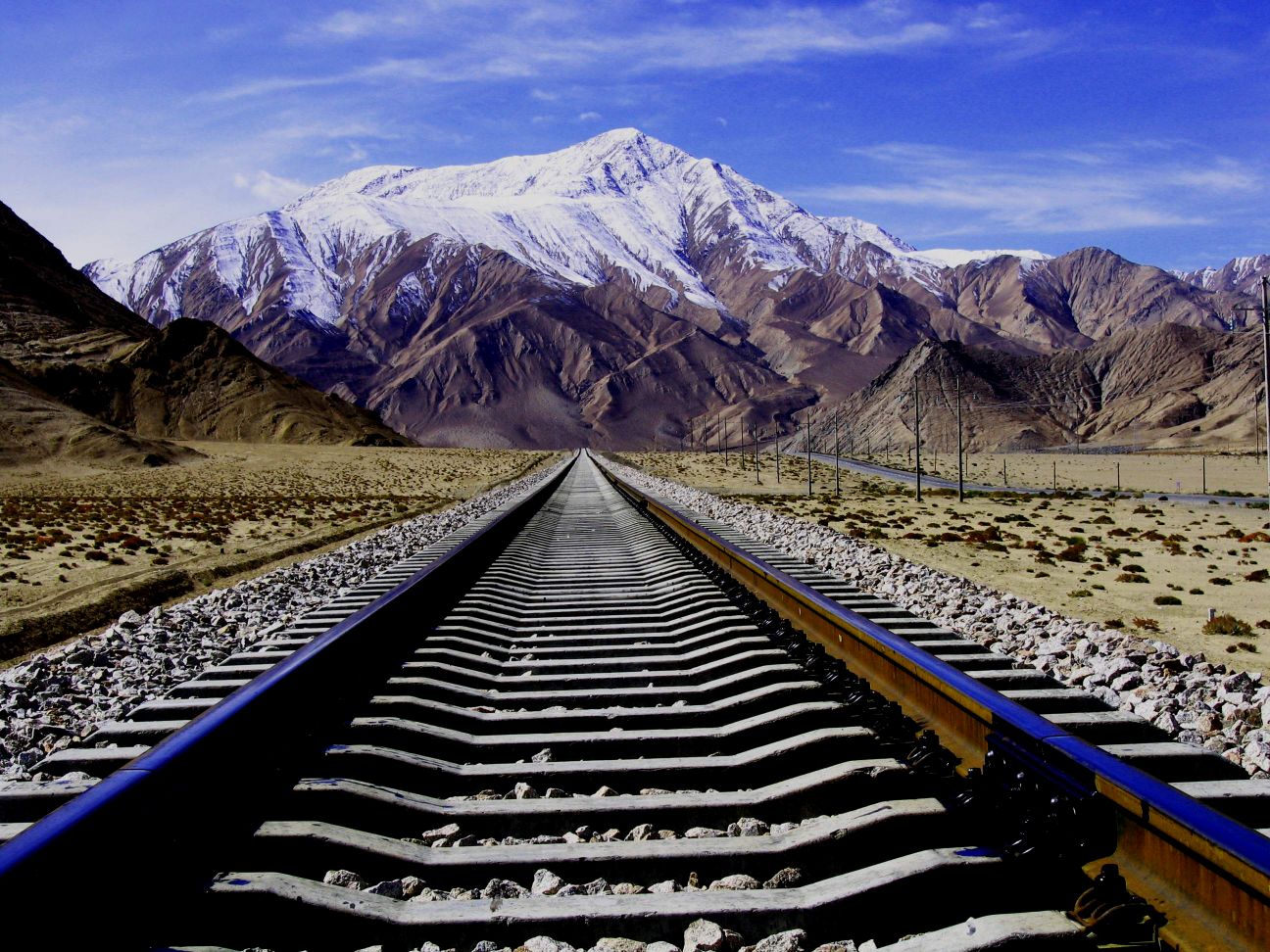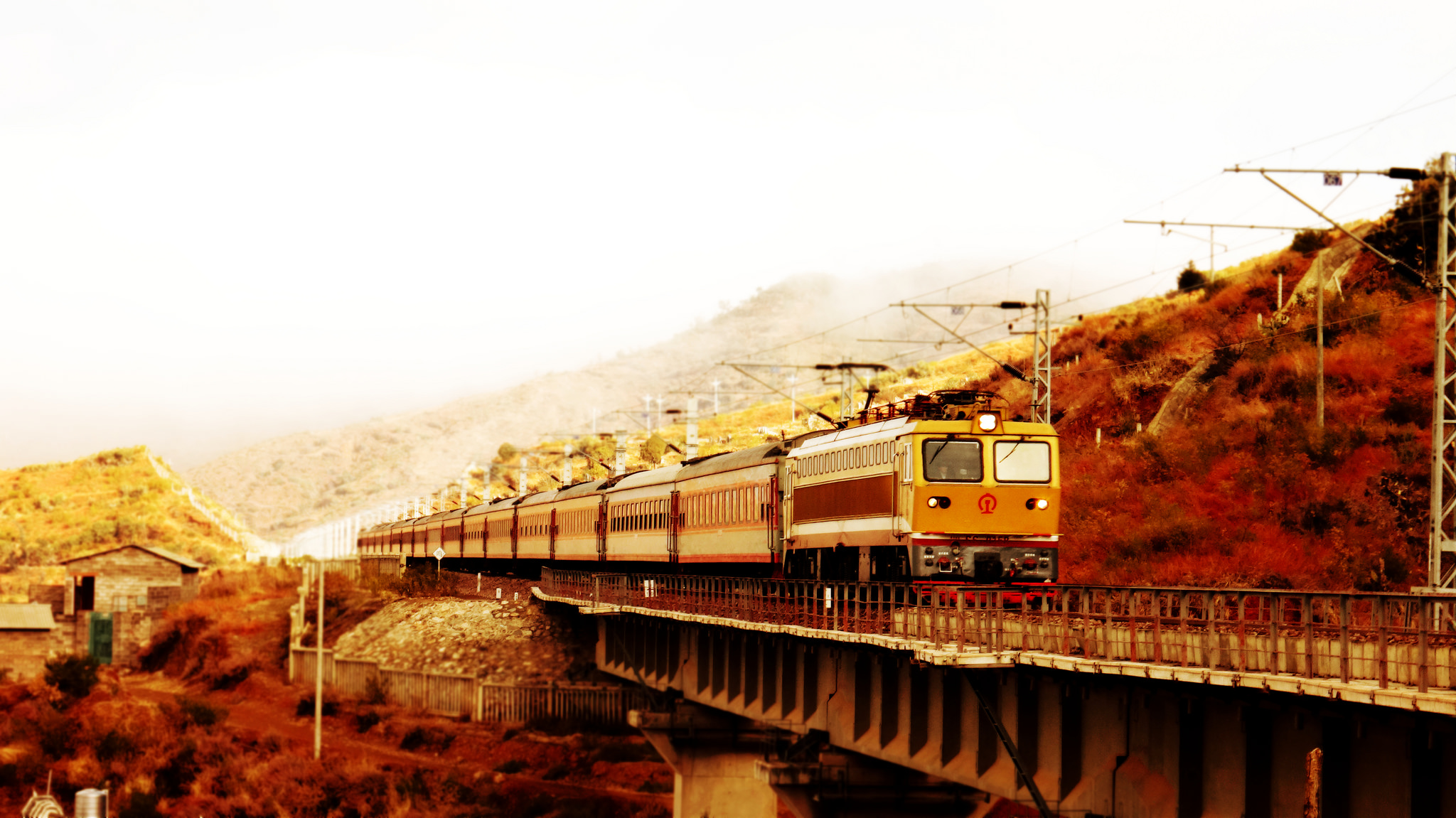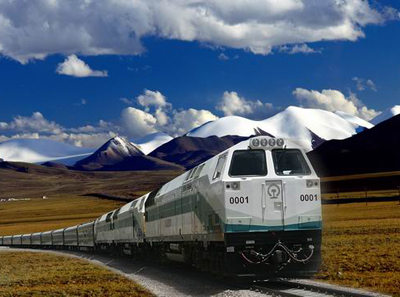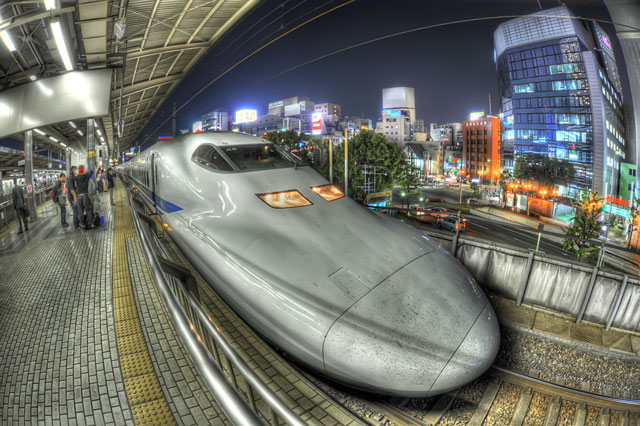Train travel in Southeast Asia has a great feel. Forget the traffic jams, the honking, the backpacker traps, and the risk of having your bag razored on a crowded overnight bus. If you travel by train, you can have increased security and comfort at affordable prices, as most trains provide clean and comfortable beds serving as overnight moving hotels.
Furthermore, train travel in Southeast Asia will take you through patches of land that would be impossible to see from the major highway routes. Traveling on the rails allows you to get to know the locals better. The train is by far their favorite mean of transport. Spend some time indulging in conversation, accept their invitations, and propel your travel experiences to unexpected, more rewarding territories.
The main routes
Hanoi-saigon
Train travel is possible in most of Southeast Asia. It is currently impossible to travel by train between Singapore and China directly. As of yet, Laos still does not have a functional rail network. It is possible to ride a train from Singapore to Chiang Mai or Vientiane using few train connections.
The main North-South rail artery stretching from Singapore through Malaysia and Thailand is fully operational. Moving eastwards, Vietnam has a great train network connecting Ho Chi Minh City to Hanoi and further north into China proper. Cambodia is currently renovating a link between Phnom Penh and Sihanoukville, and further extensions into Vietnam and Thailand’s easternmost railhead at Aranyaprathet have also been planned. Once such works will be completed, it will be possible to travel non-stop from Singapore to Beijing, and from there onwards into Europe using the Trans-Siberian line .
Myanmar has a functional -although extremely slow- train system connecting Yangoon to Mandalay and branching further north to Myitkyina and east and west to the tourist highlights of Bagan and Inlay Lake. You may still want to avoid Burmese railways, as they are controlled by the military junta who still has power in the country. A bit removed from mainland Southeast Asia by the sea, Indonesia also boosts a good rail network in southern Sumatra and Java. You may travel from Jakarta to Surabaya and Yogyakarta, and then head to Bali by bus and ferry.
Tickets, carriages, and classes
Train travel in Southeast Asia generally offers more comfort than traveling by bus.
Thailand and Malaysia: Trains in Malaysia and Thailand are extremely modern and equipped with air conditioned carriages and overnight sleeper coaches. They come in 1st, 2nd and – increasingly rare– 3rd class, seating or sleeping coaches. The difference between 1st and 2nd class lies in the quality of the seat. The 3rd class is literally a wooden bench, only available on shorter routes in Thailand. The 3rd class is not too uncomfortable for short distances and is extremely cheap; traveling from Bangkok to Ayutthaya costs only 13 Thai Baht (a mere $0.40USD). If you’re looking to mingle with the locals and don’t mind some overcrowdedness, 3rd class train travel may fit your fancy. Expect a slow market-like atmosphere on rails; the carriages fill up to the brim with food hawkers in colorful robes at every stop.
1st and 2nd classes reach the standards of most Western trains: clean, spacious, air-conditioned, and equipped with both western and squat toilets, they are the best choice for long overnight journeys. The popular 20 hour ride from Bangkok to Butterworth/Penang in Malaysia would cost you $34USD. It’s a 600 mile journey in a comfortable berth provided with fresh linens, blankets, and pillows. At these prices, it is not really worth saving on a seat.
Vietnam: Vietnamese trains are of the Chinese type and have a further classifications of hard and soft sleepers and seats. Slightly inferior to Malaysian and Thai 1st and 2nd class, soft sleeper cabins are equipped with four berths, and hard sleepers with six. The difference is minimal. The softer bunks offer increased privacy because of lesser people. However, hard sleeper is still very comfortable by backpacker standards. The price difference relates to the position: top bunks will be cheaper than middle and lower bunks.
You may prefer to sleep at the top, as lower bunks are used as daily seats by the other occupants. A top bunk in hard sleeper class covering 1000 miles between Hanoi and Saigon would cost you around $69USD– a more comfortable and safer alternative to the buses, which always drive at top speed up and down the only national coastal highway.
Myanmar: Trains in Myanmar are mostly of the 3rd class, uncomfortable type. They still evoke images of a colonial past and are a great way to get very close to the locals, but they are limited in carriages and filled to the brim with people. If your idea of adventure equals strong human contact, this may be the best option.
There are also more comfortable sleeper services connecting Yangon to Mandalay by overnight train costing around $33 for a sleeper and $22 for a 1st class seat. But again, train travel in Myanmar brings the ethical implication of paying the country’s repressive regime … the choice is only yours.
Booking your tickets
Train travel in Southeast Asia requires a reservation. This means that your ticket will list the day and time of departure, your carriage and seat/berth number.
Thailand and Malaysia: In Malaysia and Thailand it is possible to buy tickets online using a Western credit card – although at times systems may be unresponsive. Otherwise, you may purchase at the train station’s ticket office, or with the help of a travel agent. It is generally not a problem to buy tickets for popular destinations –Bangkok to Butterworth or Hat Yay, Bangkok to Chiang Mai, Kuala Lumpur to Butterworth or Singapore, or Hanoi to Saigon – a few days in advance, but be careful, train travel on weekends can get difficult because of the big numbers of regular commuters. If you do not fancy overnighting in a seat, it would be better to plan a few days ahead. Major stations such as Bangkok and Kuala Lumpur may also sell you tickets for departures from other cities, and English is generally spoken.
Vietnam: In Vietnam, you can buy tickets directly at train stations’ counters; since 2002, the reservation system has been computerized, making it possible to purchase tickets for departure from any station within the country. Bring Vietnamese Dongs as both US$ and credit cards are not typically accepted. Unless you travel during Tet – Vietnamese New Year, between late January and February according to the lunar calendar , you won’t have problems in finding a ticket for the destination you want, even at short notice. A bit of flexibility in your berth or seating choice would be necessary.
You may also decide to use the services of a guesthouses or tour operator in Hanoi or Saigon. If you prefer to book online, though, you may do so at Vietnam Railways official website, but you will have to pick up your tickets once in the country. Be ready to provide an accommodation’s address or meet the seller at ultrabusy Hanoi and Saigon train stations. Alternatively, International Rail Australia in Melbourne is a reputable train-travel agent who may help you with bookings.
Myanmar: There is no computerized reservation system in Burma, and everything is still done by hand, notebook, and paper. You will have to buy your ticket at the departure station, and it won’t be possible to program your trip for other destinations. Don’t be put off by the no-English signage, as most people in Myanmar speak excellent English and are very willing to help. In general it is not too hard for a foreigner to get a berth/seat when booking even only one day in advance.
Singapore: If you plan a visit to Singapore, consider buying your tickets elsewhere. They cost about the same amount as tickets purchased in Malaysia, but are priced in Singapore dollars. In other words, if a ticket fare is 40 ringgit, you will be charged 40 Singapore dollars, with a difference of $20USD! A very annoying detail once you know that the Woodlands train station is just 10 kilometers away from Johor Bahru in Malaysia.
Suggested itineraries
The best way to have a memorable experience in Southeast Asia is to savor the breadth and length of its railways. There are two potential main routes branching off the big travel hubs of Kuala Lumpur, Singapore, and Bangkok.
From Singapore
Start off by taking a train to Kuala Lumpur. Then, travel north to Butterworth/Penang, or cut through the pristine forested interior of Malaysia via Gemas and Kota Bharu via the “Jungle Railway”. Continue to Thailand via Hat Yay. Then on to Bangkok as a single overnight trip, or stopping in the coastal towns or popular Thai islands along the way.
From Bangkok
You may continue north by train to Vientiane in Laos and make your way by bus to Hanoi, Vietnam. Here you may take a southbound train to Saigon, stopping off en route in Hue, Hoi An and Nha Trang. Once in Saigon, take a bus (or boat from the Mekong area south of Saigon) across the border to Phnom Penh, Cambodia. From here, continue by bus or shared taxi to Thailand’s easternmost border at Aranyaprathet and get on the slow train to Bangkok for a final ride, completing a circular route from Bangkok. Alternatively, take an overnight train from Bangkok to Chiang Mai, or stop off along the route at Ayutthaya and Phitsanulok to visit the majestic ruins of Sukhothai. Once in Chiang Mai, get off the rails and start exploring the area by bus or rented motorbike.
Pros and cons of train travel in Southeast Asia
There are many pros to train travel in the region:
For long journeys you will end up paying less than a combination of bus and night accommodation. You will arrive at your destination early enough in the morning to make the best out of your day. Keep in mind that train bunks are very comfortable and clean and can even be of a higher standard compared to the cheapest guesthouses. Long distance trains also have the restaurant carriage perk. These “dining clubs” can provide interesting encounters and party times as the train chugs over rails.
The main cons to train travel:
Being bound to a time schedule, getting to the station half an hour before departure, and experiencing delays (which seem to happen more times than not). The necessity to pre-arrange your bookings in order to travel overnight may also be a nuisance for many.
Too much planning may limit the time you spend in each place; however, remember that tickets can be canceled and refunded up to a few hours before your scheduled departure.
Safety tips and concerns
Train-traveler
Train travel in Southeast Asia is generally a safe affair if you take simple precautions. Lock your packs and possibly chain them under the lower bunk if you are a deep sleeper. Trains are modern and have electric plugs situated at the middle of the carriage. Do not leave your charging devices unattended when going to the bathroom or if you are carried away in the conversation with your newly acquired, chatty friends.
Train travel in Southeast Asia is generally a safe affair if you take simple precautions.
International border crossings are also generally safe. The train will stop to let you go through immigration clearance and new formalities before you may board your carriage again. Conductors usually do not require you to grab all your belongings, especially the bulkier packs and bags. However, I recommend you carry your electronics and important documents with you across the border at all times. As simple as it may sound, the relaxed atmosphere you will experience on board may make you lower your defenses. Unfortunately, petty crime is quite common during border crossing buffer time, but easily avoidable if you keep your wits about you.
Advice and tips from my own experience
I have traveled almost the whole length and breadth of the Southeast Asian railways, collecting fantastic memories. The slow pace and interesting plethora of characters on the Bangkok to Butterworth express has made it my favorite.
22 hours of relaxing rail apnea are a perfect time to unwind and indulge in some serious reading. Let the scenery unfold from the greyish Bangkok suburbs to coastal towns and endless rice paddies, culminating in the saw-toothed limestone karsts’ magic dotting northern Malaysia. By taking the bus, you will miss all of the above.
Arriving at Bangkok or Butterworth really gives a traveler that special sense of completion of a long journey. Plus, the train makes its way straight into Bangkok’s city center, avoiding the constant traffic jams on the way to the airport. To me, $34USD for this journey is an incredible price.
Using the overnight express from Bangkok to either Chiang Mai or Thanaleng/Vientiane is a bit more expensive than the bus at around 900 baht/$25USD, but much more comfortable for overnight travel. In the case of the Chiang Mai route, the morning scenery you will see across the villages and slopes of northern Thailand are worth the price alone. I loved to wake up early and watch the sunrise coloring the bamboo thatched huts in shades of pink and orange – difficult to see from the bus.
If you have time to soak in Southeast Asia’s slow pace of life, experiencing it by train is a great way to do it. Those iron tracks slung all the way to the horizon will help you make life-long, lasting, vivid memories of great human encounters.
By By Marco Ferrarese
March 21st, 2014
www.bootsnall.com

